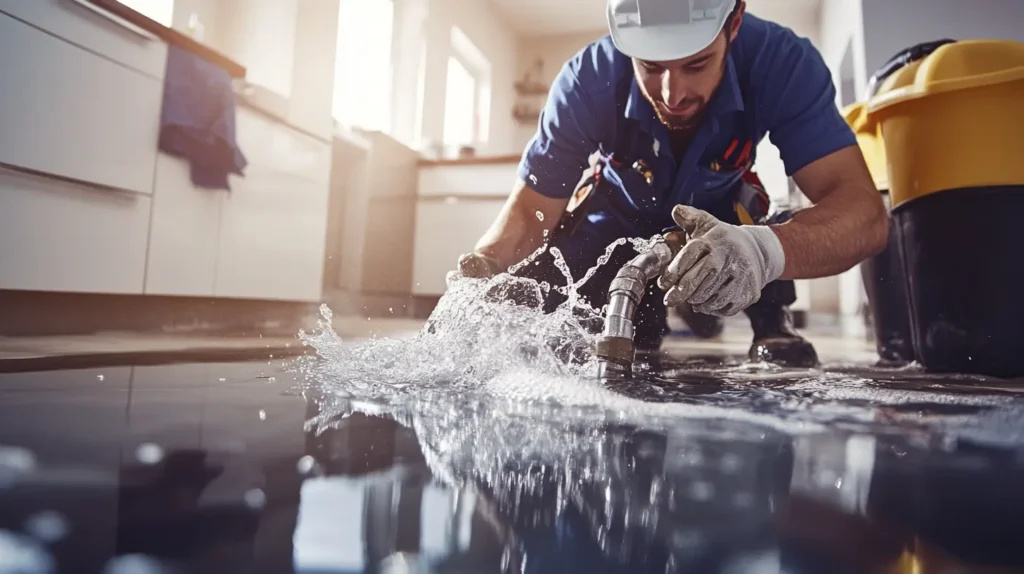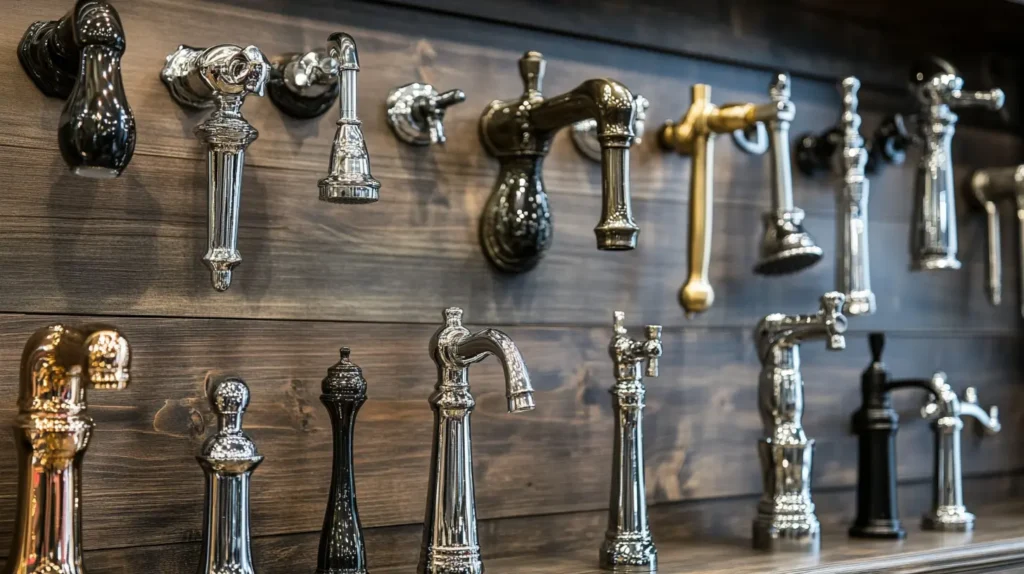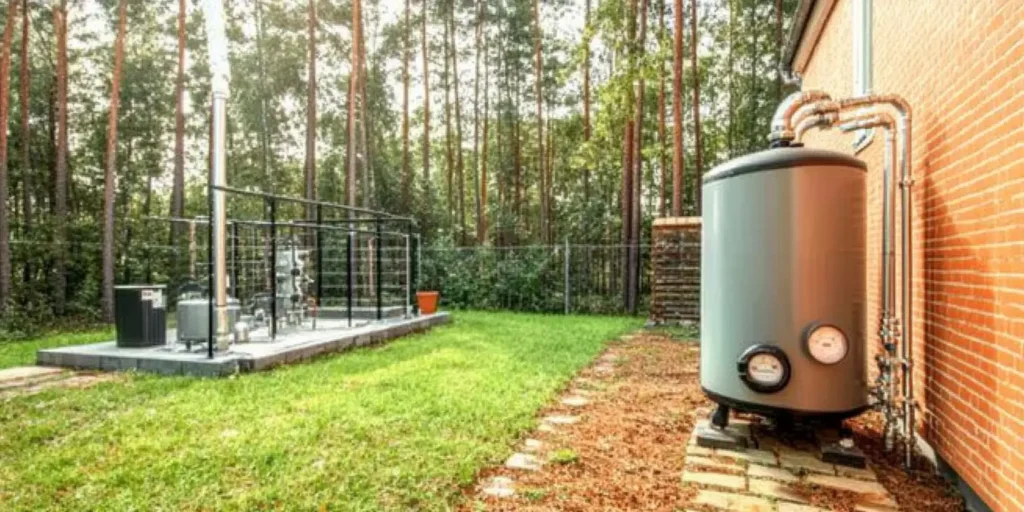Are you tired of dealing with a trickle when you expect a torrent? Low water pressure in your home can turn everyday tasks like showering or washing dishes into frustrating chores. But worry not! Kingdom Based Plumbing is here to guide you through some quick hacks to boost your water pressure in Northeast Florida.
Increase your water pressure.
Before diving into solutions, it’s essential to understand why you might be experiencing low water pressure. It could be due to clogged pipes, faulty fixtures, or even municipal supply issues. Whatever the cause, identifying the root problem is the first step towards a solution.
Step 1: Check for Clogs
Diagnosing and Resolving Clogged Pipes
A common but often overlooked culprit for low water pressure in homes is clogged pipes. Over time, even with regular use, your home’s plumbing can accumulate mineral deposits such as calcium and lime, especially in areas with hard water. These deposits gradually build up on the inner walls of pipes, reducing the diameter through which water can flow, which in turn decreases the water pressure.
Understanding Mineral Deposits and Their Effects
Mineral deposits occur when water with a high mineral content, commonly known as hard water, travels through your plumbing. As the water moves, it leaves behind small mineral particles that cling to the pipe walls. Over time, these particles accumulate and harden, forming a tough layer of limescale that significantly narrows the pipe’s passageway.
This reduction doesn’t just lower water pressure; it can also lead to other plumbing problems. For instance, the reduced diameter increases the overall pressure and strain within the pipes, potentially leading to leaks or bursts in older or weaker sections of your plumbing.
The Role of Regular Cleaning and Maintenance
To prevent the buildup of mineral deposits and maintain optimal water pressure, regular cleaning and maintenance of your plumbing system are crucial. This includes both home remedies and professional interventions:
- DIY Cleaning with Vinegar: Vinegar is a highly effective, natural acid that can dissolve mineral deposits. For a quick fix, you can flush your pipes with a vinegar solution. Simply:
- Fill a bag with vinegar and secure it over your faucet with a rubber band, ensuring the faucet is fully immersed. Leave it overnight.
- For larger-scale clogs, you may need to pour vinegar directly into your water supply tank or apply it to specific areas with significant buildup.
- Professional Cleaning: While DIY methods can be effective for minor clogs, more severe or deep-set clogs often require professional cleaning techniques such as hydrojetting. This method uses high-pressure water streams to blast away years of buildup in your pipes.

When to Call a Professional
While minor clogs can often be handled on your own, significant or persistent reductions in water pressure might indicate a more severe problem that could require professional attention. Here are a few signs that it’s time to call in the experts from Kingdom Based Plumbing:
- If water pressure doesn’t improve after a DIY cleaning.
- If there is inconsistent water pressure throughout your home.
- If you notice discolored water or a sulfuric smell, it could indicate pipe corrosion or decay contributing to the clogs.
Preventative Measures
To prevent future clogs and maintain a healthy plumbing system, consider installing water softeners if you live in a hard water area. Additionally, regular inspections can help catch and resolve issues before they lead to a decrease in water pressure.
Step 2: Inspect the Pressure Regulator
The Critical Role of Pressure Regulators in Maintaining Water Pressure
Many residential plumbing systems are equipped with a pressure regulator, which is essential in controlling the water pressure flowing into your home. This device is designed to maintain a constant water pressure level, typically between 40-60 pounds per square inch (psi), to ensure your plumbing operates efficiently and safely. However, like any mechanical device, pressure regulators can fail, leading to noticeable changes in your home’s water pressure.
Identifying a Faulty Pressure Regulator
A faulty pressure regulator is a common cause of low water pressure in homes. Symptoms of a malfunctioning regulator include sudden drops in water pressure, inconsistent water flow, or unusually high water pressure, which can also lead to damaging pipes and fixtures.
How Pressure Regulators Fail:
- Wear and Tear: Over time, internal components like springs and diaphragms can wear out.
- Sediment Build-Up: In areas with hard water, sediment can build up inside the regulator, preventing it from functioning correctly.
- Age: Older models may simply fail due to age and the stress of regulating water pressure over many years.
Testing and Replacing a Faulty Pressure Regulator
To determine if your pressure regulator is the cause of low water pressure, you can perform a simple test using a water pressure gauge. This tool can be attached to a hose bib or a faucet typically found outside the house or in the basement.
Step-by-Step Testing Process:
- Attach the Gauge: Screw the water pressure gauge onto the hose bib and open the tap fully.
- Read the Pressure: Observe the reading on the gauge. A normal pressure reading should be between 40-60 psi.
- Monitor for Fluctuations: Watch the gauge for a few minutes to see if the pressure changes erratically, which can indicate regulator issues.
If the pressure is consistently below 40 psi or fluctuates significantly, it’s time to consider replacing the pressure regulator.
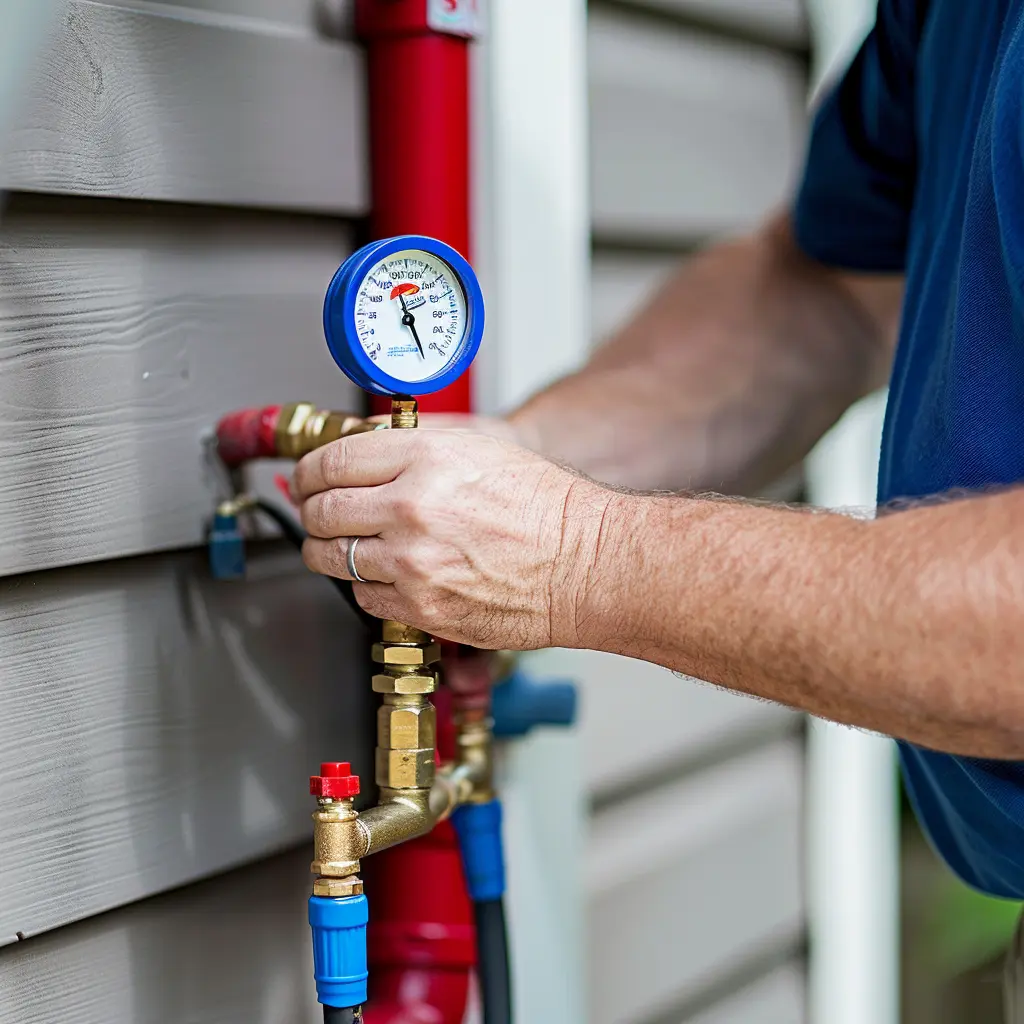
Replacing the Regulator:
- Consult a Professional: While some homeowners may feel comfortable tackling this task, replacing a pressure regulator involves understanding plumbing systems and potentially modifying piping.
- Use Quality Parts: Always choose high-quality replacements to ensure longevity and performance.
- Regular Checks: After replacement, monitor the water pressure periodically to ensure the new regulator functions properly.
Preventive Measures and Regular Checks
Regular maintenance checks can extend the life of your pressure regulator and prevent unexpected plumbing issues. During these checks, cleaning any sediment and verifying the integrity of the regulator’s components are crucial steps.
Step 3: Upgrade Fixtures
Revitalizing Water Flow with New Fixtures
At times, the key to resolving low water pressure issues isn’t in overhauling your entire plumbing system but rather in updating the fixtures themselves. Old, faulty fixtures such as shower heads, faucets, and valves may not only be aesthetically outdated but can significantly impair water flow, making them prime suspects in the quest for better water pressure.
The Impact of Outdated Fixtures
Old fixtures can accumulate mineral deposits that restrict water flow, or they may simply be designed to lower standards that don’t accommodate modern water pressure needs. Moreover, worn-out seals or broken components can cause leaks and reduce the pressure that reaches your tap.
Common Problems with Old Fixtures:
- Mineral Build-Up: In areas with hard water, minerals can deposit in the nozzles and aerators of faucets and showers, clogging them over time.
- Corrosion and Wear: Metal fixtures can corrode, and washers and o-rings inside them can wear out, both of which can restrict water flow and cause leaks.
- Inefficient Design: Older designs may not be optimized for water flow, meaning they inherently perform poorly compared to modern fixtures.
Choosing High-Efficiency Fixtures
Replacing old fixtures with new, high-efficiency models is not just a matter of unscrewing the old and screwing in the new; it’s about making a choice that will impact your water usage and conservation efforts. Modern fixtures are designed to provide more water pressure with less water consumption, which is not only good for your water bill but also for the environment.
Benefits of Upgrading Fixtures:
- Improved Water Pressure: High-efficiency fixtures are engineered to maximize water flow, ensuring you get more pressure out of the same amount of water.
- Reduced Water Consumption: These fixtures often come with aerators and advanced flow optimizers that reduce water usage without compromising on performance.
- Enhanced Aesthetics and Value: New fixtures can refresh the look of your kitchen and bathrooms, adding to your home’s aesthetic appeal and value.
Implementation: Installing New Fixtures
Installing new fixtures can usually be a DIY job with the right tools and a bit of know-how. However, for more complex setups or in cases where modifications to plumbing are needed, it may be wise to call in professionals.
- Select the Right Fixtures: Choose fixtures that are appropriate for your home’s water system and aesthetic needs.
- Gather Necessary Tools: Typically, you’ll need wrenches, Teflon tape, and possibly some plumbing putty.
- Installation Process: Turn off the water supply, remove old fixtures, clean the installation area, and install the new fixture according to the manufacturer’s instructions.
- Test for Leaks and Functionality: Once installed, turn the water back on and check for leaks and ensure proper functionality.
Step 4: Check for Leaks
Identifying and Addressing Leaks in Your Plumbing System
One of the most common but often overlooked causes of low water pressure is leaks in the plumbing system. Even small leaks can significantly impact the overall pressure by diverting water from its intended path. These leaks can be hidden behind walls, under floors, or even underground, making them challenging to detect without a thorough investigation.
The Impact of Leaks on Water Pressure
Leaks not only waste precious water but also reduce the efficiency of your entire plumbing system. A drop in pressure often indicates that water is escaping from the system somewhere between the main line and your faucet. This can lead to increased water bills and potential damage to your home’s structure if not addressed promptly.
Common Signs of Leaks:
- Unexpected Increase in Water Bills: An unexplained rise in water costs can often be traced back to leaks.
- Mysterious Running Water Sounds: Hearing the sound of water when all taps are closed is a clear sign of leaks.
- Wet Spots or Dampness: Unusual moisture on floors, walls, or ceilings can indicate leak locations.
- Mold or Mildew Presence: Especially if it appears in non-shower areas, mold can signify hidden moisture from leaks.
Methods for Detecting Leaks
Visual Inspection: Begin with a visual inspection of all exposed pipes, joints, and faucets. Look for signs of corrosion, rust, or dripping water, which are clear indicators of potential issues.
Listening for Leaks: In quieter moments, listen carefully for the sound of running water. This can be particularly effective during times when water use is low, such as at night.
Water Meter Test: For a more definitive leak test, use your water meter:
- Turn off all water usage: Ensure no water is being used inside or outside your home.
- Record the meter reading: Note the current reading on your water meter.
- Wait 1-2 hours: After a couple of hours, check the meter again.
- Check the reading: If the meter shows water usage during the test, you likely have a leak.
Dye Test: For toilets, a dye test can help identify leaks. Place a few drops of food coloring in the tank and wait. If color appears in the bowl without flushing, there’s a leak.
Fixing Detected Leaks
Upon detecting a leak, immediate action is necessary:
- Tighten Fittings: Sometimes, simply tightening the joints and fittings can stop a leak.
- Replace Damaged Parts: For more severe leaks, replace the damaged pipes or fittings.
- Professional Help: For complex leaks, especially those that are not easily accessible, hiring a professional like Kingdom Based Plumbing is advisable.
Preventive Measures
Regular maintenance checks can prevent leaks from developing. Regularly updating old pipes and fixtures, installing water pressure regulators, and monitoring your water meter can all help maintain the integrity of your plumbing system.
Step 5: Install a Booster Pump
Inadequate Municipal Pressure: If your water comes from a municipal source and the pressure is consistently low, a booster pump might be necessary.
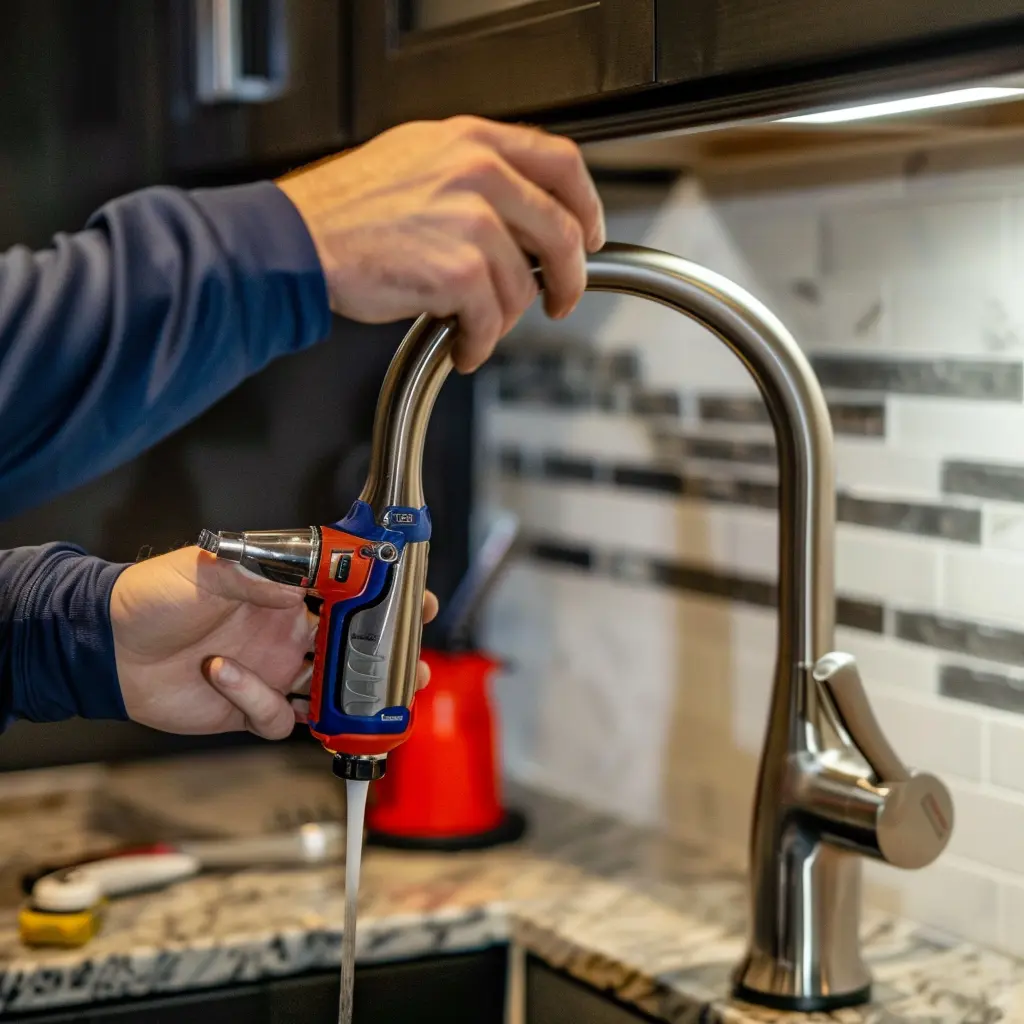
Solution: A booster pump increases the water pressure by mechanically elevating the water flow from your water supply line.
Best Practices for Managing Water Pressure
- Regular Monitoring: Use a water pressure gauge to keep tabs on your home’s water pressure.
- Scheduled Maintenance: Have your plumbing system checked annually by professionals like Kingdom Based Plumbing to prevent unexpected issues.
- Consult Professionals: For persistent problems, consulting with a plumbing professional can provide specific insights and solutions tailored to your home’s needs.
Frequently Asked Questions
What causes low water pressure in the whole house?
Common causes include clogged pipes, faulty pressure regulators, or issues with the municipal water supply.
How to fix low water pressure in-house?
Start by checking for clogs and leaks, inspecting the pressure regulator, and considering the installation of a booster pump if necessary.
Why is the water pressure low in my house?
This could be due to a variety of reasons such as pipe corrosion, leaks, or inadequate municipal water pressure.
How to lower the water pressure in the house?
If your water pressure is too high, adjusting or replacing the pressure regulator can help maintain a safer level.
How do we solve low water pressure in-house?
Employ methods such as cleaning clogged pipes, replacing old fixtures, and ensuring there are no leaks in your plumbing system.
Conclusion
With these steps, you can transform weak drips into powerful streams and ensure your plumbing performs at its best. Remember, regular maintenance and early detection are your best tools against plumbing problems. Don’t hesitate to call Kingdom Based Plumbing for expert help and more personalized solutions to keep your water flowing strong!

